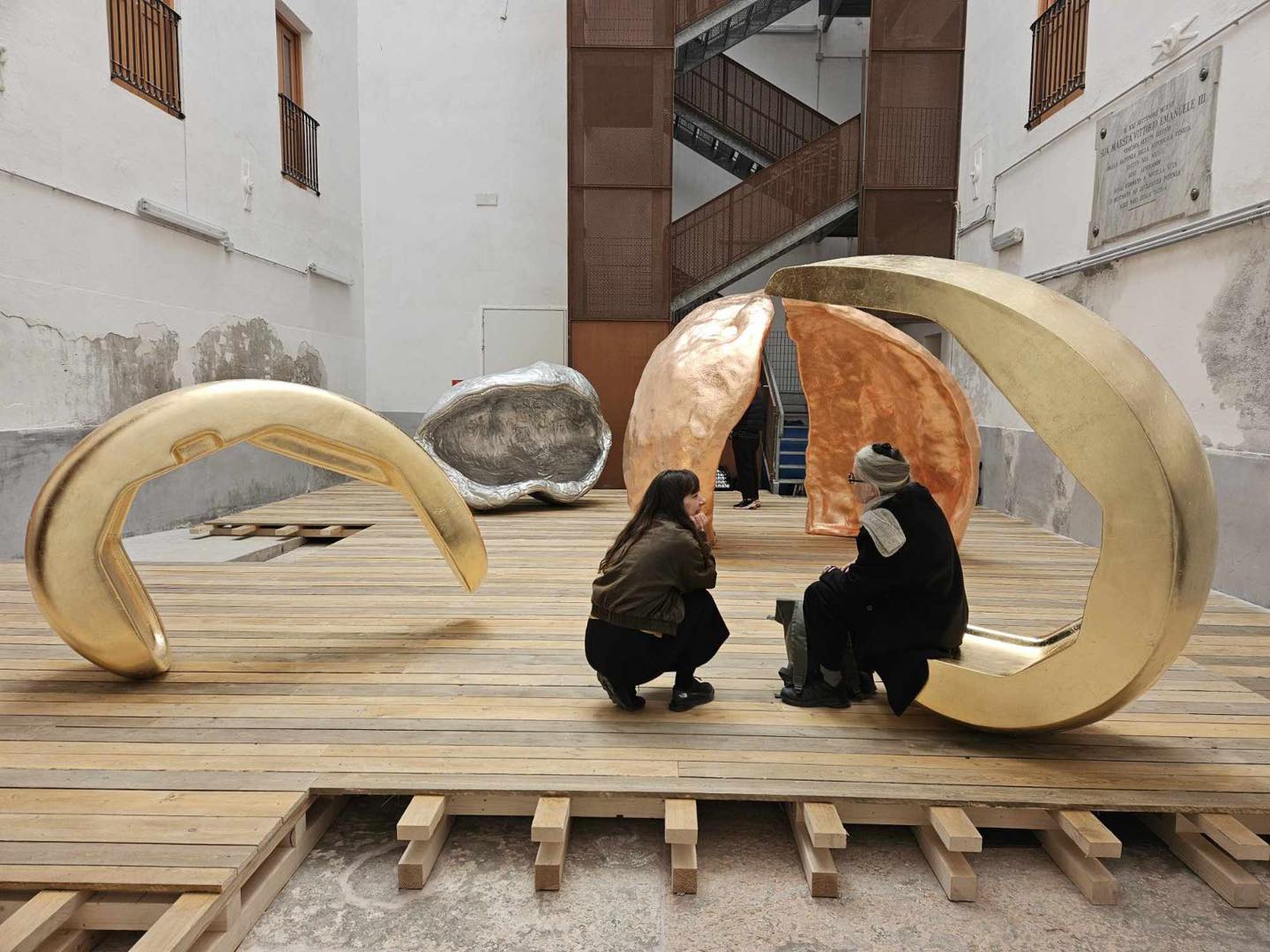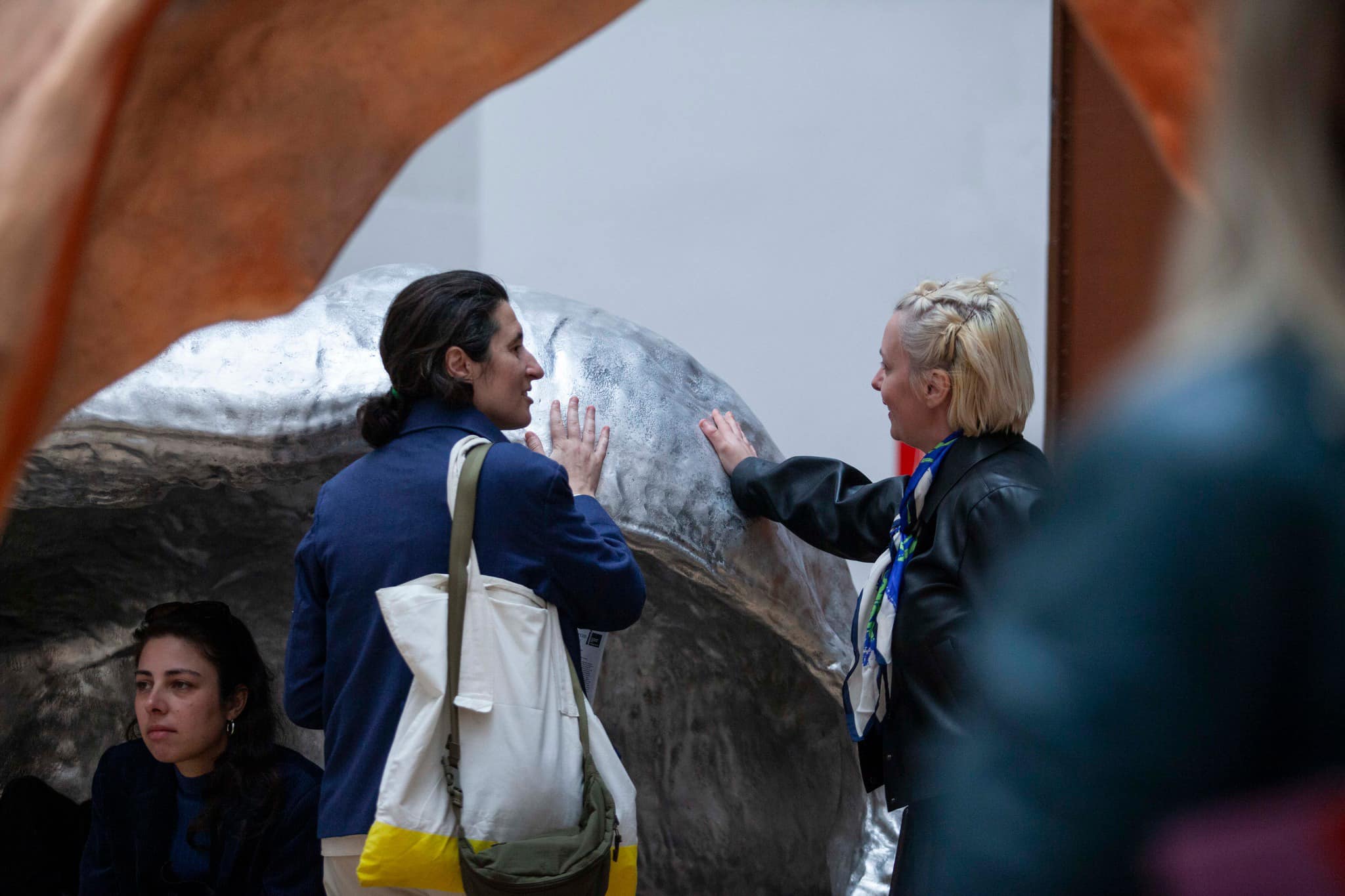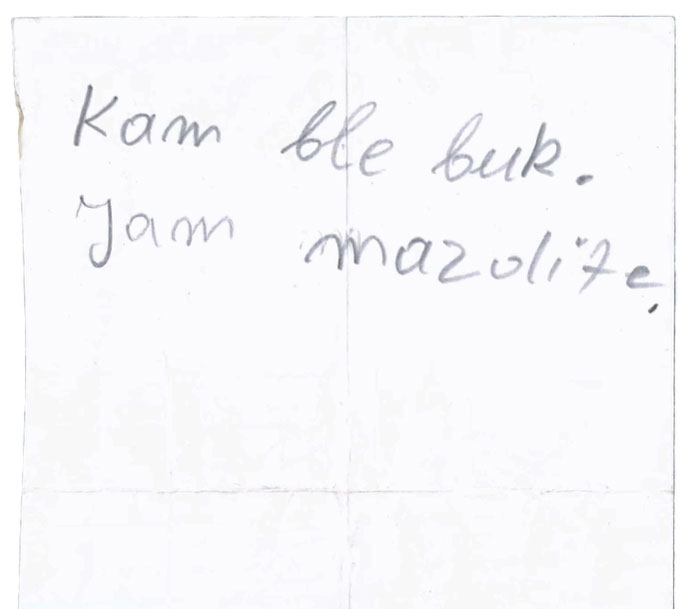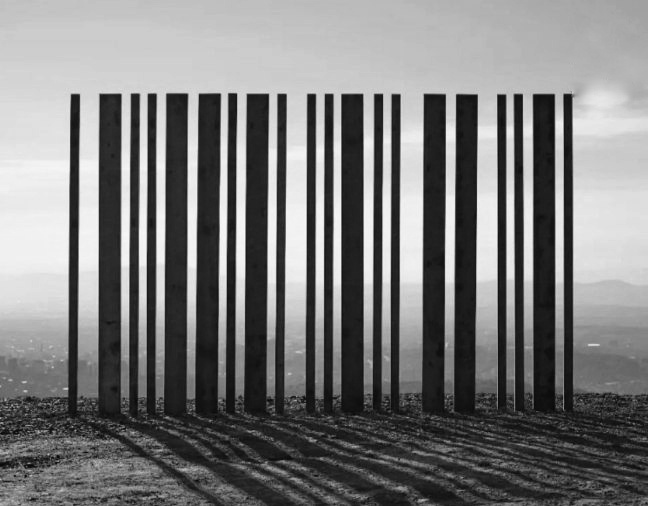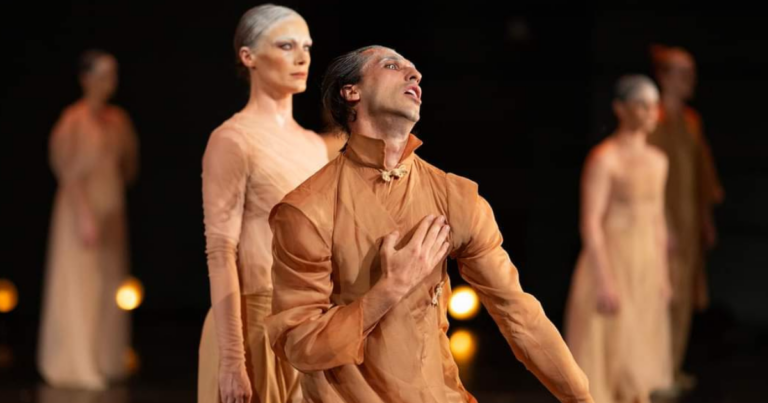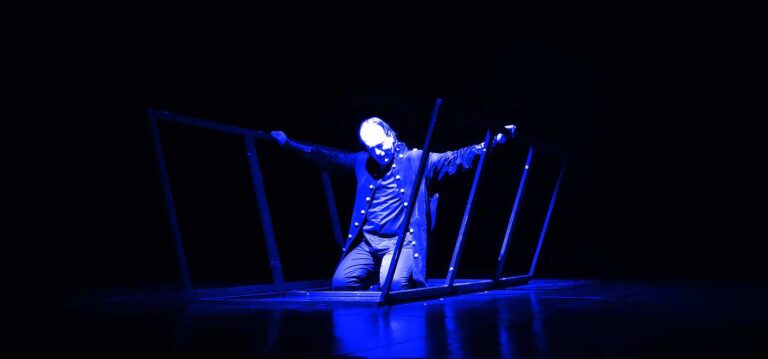The echoing Silences of Metal and Skin
Milot Gusia
Reflection on sculptural installation "The echoing Silences of Metal and Skin"
Human experiences in their essence are about sharing stories and connecting with others. As the poet and human rights activist Maya Angelou once said, "there is no greater agony than keeping a story repressed within you."
The sculptural installation "The echoing Silences of Metal and Skin" is a complex multidimensional project that touches on a subject of human experiences.
The sculptural installation is rooted in the personal story of the artist's mother, which was merged with the stories of other workers of the factory. These stories from the margins speak of ordinary workers who have been brought to a helpless position in society. Pushed to the margins, their voices has become less valuable than post war society social norms.
Therefore, the skin symbolizes sensuality and fragility, but also human mortality. Within the artwork, it doesn’t serve purpose of a decorative cover, instead it is a narrative canvas that conveys and sends the audience under the skin of personal experiences.
"To not be able to tell your story, to be silent and shut up, means to dehumanize" is the saying of the Turkish-British writer Elif Shafak, which the artist brings to light in her opening speech, conveying special emotions and humane wisdom to the audience. Although the work reveals a sad truth of post-war Kosovo, it also encourages visitors to have the power for facing the truth. This artworks story is best summed up by the saying "Either give me the bliss of ignorance, or give me the strength to face the truth."
Ordinary people as in the case of the factory workers fear that their stories have no value and can be misunderstood. But the truth is that only such stories have the potential to transform and empower, but also to create bonds between us.
By giving voice to these stories, the artist has managed to challenge dominant narratives and create space for new perspectives. And these new narrative spaces are what gives the full power and meaning to this sculptural work.
The use of metal in the sculptural installations emphasizes the durability of these women, and their resistance to time, symbolizing also their power. The playful light on the surface of the metal sculptures creates dynamic nuances thus visually presenting the contradictions of human construction and destruction.
The sculptures with their pronounced format remind us of the works of the artist Alexander Calder, known for his dynamic movements and subtle kinetic balances. However, in these sculptures, the movement, in addition to being kinetic, is also electromagnetic. Sculptures in this case are not static objects, but serve also as musical instruments.
A slight touch causes the sculptures to vibrate, emitting subtle tones. This enables spatial engagement. These sculptures invite viewers to physically engage with the works. Visitors can walk around them, touch, or even sit inside the sculptures, to become part of the complete audiovisual experience, and at the same time to immerse themselves in the narratives of these works.
Sculptures evoke natural sounds. Their subtle qualities make visitors connect with the environment and their sensory perceptions. The interplay between form, material and sound in these works is unique. They call us to listen, feel and reflect on the narratives hidden within the silent and resonant metal forms.
With their musicality, they remind us of the works of the Italian artist Harry Bertoia, who also became known for creating sound sculptures. The inclusion of sound as an integral element enabled the creation of complex resonant sculptures, which with their organic forms and subtle sounds interact with the environment.
Even the floor where the sculptures are placed creates resonant vibrations. In this aspect they reminds us of the Italian artist Loris Cecchini, who also masterfully created vibrating sculptures. Let's remember the last cycle of his works entitled "Wallwave Vibrations" that transformed the walls of the gallery into pulsating electromagnetic waves.
The sound part of the sculptural installation was realized by Paul Hauptmeier and Martin Recker.
Paul Hauptmeier is an expert who specializes in exploring the possibilities of using augmented and virtual reality in art. He has been also earlier part of the Biennale (in 2022), with his lectures focusing on the intersection of music, technology and augmented reality (AR/VR).
On the other hand, Martin Recker is an artist and composer known for the use of sound and multimedia in art. Recker and Hauptmeier have collaborated on numerous artistic works, including opera, electronic performances, radio-art and electro-acoustic music. Among the many works that came to life from the collaboration of these artists, we can emphasize: "Vent 2018" (binaural version), "Geteilte Räume" (with Hauptmeier) and "Leaps 2016".
The sculptural installation "The echoing Silences of Metal and Skin" with its deep narrative and unique materialization has achieved to convey important messages to the public. The power of these installations rests on the unique story that brought them to life.
These narratives have managed, despite the differences, to make a connection between different generations and cultures. What is special about the stories brought by the Narrative Center is that each storyteller has brought a unique perspective, thus enriching our collective memory.
In general, sculptural installations evoke truthful emotions, and by encapsulating true experiences achieve to make their messages universal. The unique materialization of the narratives has managed to cause emotions that, in the case of this exhibition, have achieved to overcome linguistic and cultural barriers. Personal messages in this work have turned into collective and universal messages.
The work is well adapted to the general curatorial concept woven by the curator Adriano Pedrosa that has touched the theme of the foreigner, creating a parallel with the artist, who in modern times shared a lot in common with the foreigner. Let's remember that both the artist and the foreigner are on the margins, challenge the norms of society and value things that are contrary to the majority.
Adriano Pedrosa (born 1965) presents the first non-European or North American curator at the Venice Biennale. Adriano Pedrosa is a Brazilian curator who is also the artistic director of MASP or the Museum of Art in Sao Paulo. Initially being an artist himself who turned to curator, Pedrosa is showing great success in organizing artistic events. For the title of this year's Biennale "Strangers Everywhere", the artist found inspiration in the work of the artist Claire Fontaine. Pedrosa shows a unique approach to the curation of artistic events, through a diversity which he achieves by bringing to light forgotten artists, but also by bringing new and unknown artists, thus detaching art from the elitist environment.
His well-known exhibition entitled "Afro-Atlantic Histories" held at MASP Sao Paulo, has provided a theoretical structure which is embracing a more inclusive and comprehensive history of art.
It's true that being a foreigner carries a weight because your heart is elsewhere as you seek acceptance and adjustment in your new surroundings. The theme of this edition makes us reflect on our belonging, identity and values in today's global times.
On the other hand, the sculptural installation reminds us that every voice is important and as many more voices we bring to light enables us to create a more inclusive and understanding society.
These sculptures can be summed up in another saying by Elif Shafak: "every true love and friendship is a story of an unexpected transformation." If you remain the same person before and after love, it means you haven't loved enough."
The entire exhibition is accompanied by a publication based on research, where three oral histories of former employees of the Turkish delight Factory are presented. These stories included in this special issue encourage other women to break free from silence and embrace their unique voices and personal narratives.
The history of Kosovo's participation in the Venice Biennale
If we sum up this artistic work and its participation in the sixth consecutive edition for Kosovo at the Venice Biennale, we can conclude that it is among the most successful.
But let's not forget a unique legacy that Kosovo is creating in avant-garde art through the Venice Biennale. In 2013, the art pavilion was presented by the well-known artist Petrit Halilaj, with his installation: I'm hungry to keep you close...." Then, in 2015, artist Flaka Haliti presented her work titled "Speculating on the blue". In 2017, the well-known artist Sislej Xhafa was presented by the work entitled "Lost and Found", which was a unique appeal for the fate of persons who disappeared during the war in Kosova. In 2019, the artist Alban Muja was presented with his video installation "Family Album" that conveyed the stories of war by the new post-war generation in Kosovo, while, in 2022, Kosova was presented by Jakup Ferri with his work "Monumentality of everyday life".
External Links
- Pavijoni i Republikës së Kosovës Ekspozita e 60-të Ndërkombëtare e Artit, La Biennale di Venezia. Linku: https://2024.pavilionofkosovo.com/about?lng=al
- Exibart, Shpërblimet në Bienalet e Venedikut. Linku:https://www.exibart.com/premi/i-leoni-della-60-esposizione-internazionale-darte-la-biennale-di-venezia/
- ObserverKult. KOSOVA HAP PAVIJONIN E SAJ NË BIENALEN E VENECIAS. Linku: https://observerkult.com/kosova-hap-pavijonin-e-saj-ne-bienalen-e-venecias/
- Kultplus. Doruntina Kastrati do të përfaqësojë Kosovën në Bienalen e Venedikut 2024. Linku: https://www.kultplus.com/arti-pamor/doruntina-kastrati-do-te-perfaqesoje-kosoven-ne-bienalen-e-venedikut-2024/
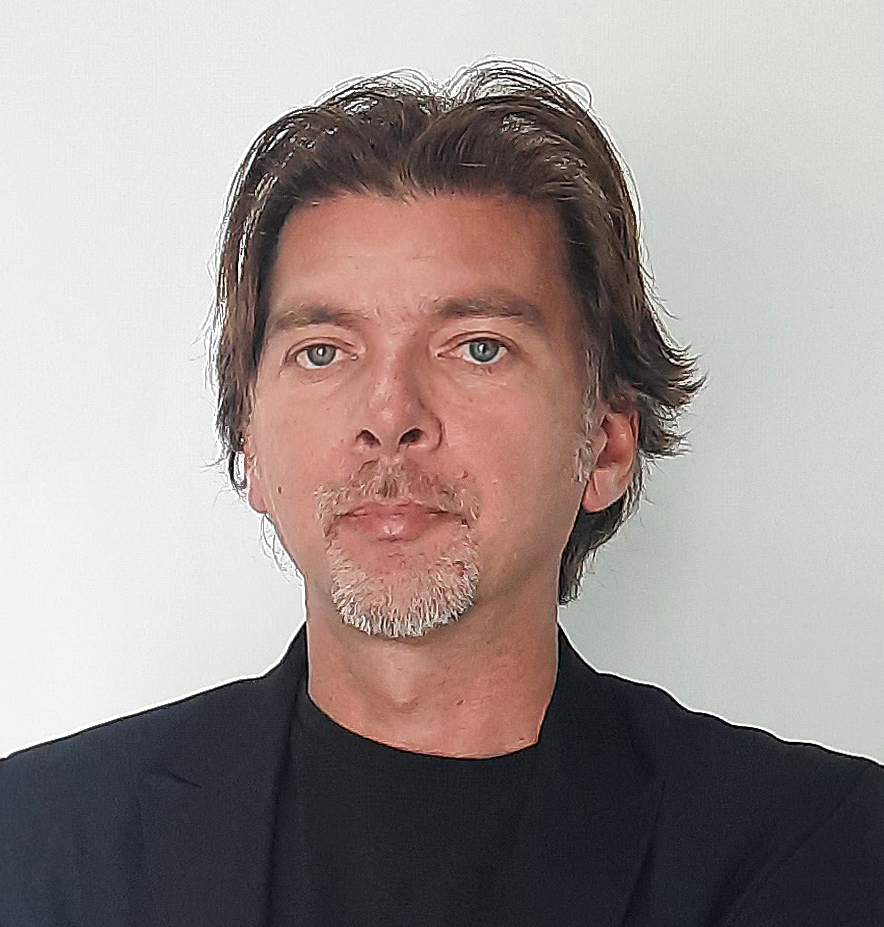
About the author
Milot Gusia works as a professor and editor, as well as a critic in the local and international art scene. He has worked on a number of programs in the field of art and culture.
He completed his master's studies in Graphic Design at the University of Pristina, as well as his MBA studies at Staffordshire University, Great Britain.

